-
Specializing in:
- Indoor Electric Radiant Floor Heating
- Solar Air And Water Heating Systems
- Electric Snow And Ice Melt
- Soil Heating For Green Houses
- U.S. Floor Heating Quote
- U.S. Solar Heating Quote
- U.S. Snow Melting Price List
- U.S. Soil Heating Price List
- U.S. Infrared Inspection Price List
- Heating Your Floor with Heated Floors
- Thermal Imaging Infrared Inspection
- Get Free Energy with Solar Space Heating
- No More Shovel with Snow Melting
- Plant Year Round with Soil Heating
- Reduce Your Carbon Footprint
- Education Center
- Sitemap
Radiant Floor Heating
Radiant heating systems involve supplying heat directly to the floor. The systems depend largely on radiant heat transfer: the delivery of heat directly from the hot surface to the people and objects in the room via the radiation of heat. As an example, radiant heating is the effect of your kitchen warming up when the electric stove is turned on across the room.
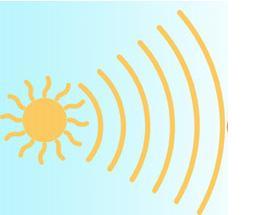 Radiant heating has a number of advantages: it is more efficient than baseboard heating and usually more efficient than forced-air heating, since no energy is lost through ducts. The lack of moving air can also be advantageous to people with severe allergies. Hydronic (liquid based) systems use little electricity; a benefit for homes off the power grid or in areas with high electricity prices. The hydronic systems can also be heated with a wide variety of energy sources, including standard gas or oil fired boilers, wood fired boilers, solar water heaters, or some combination of these heat sources.
Radiant heating has a number of advantages: it is more efficient than baseboard heating and usually more efficient than forced-air heating, since no energy is lost through ducts. The lack of moving air can also be advantageous to people with severe allergies. Hydronic (liquid based) systems use little electricity; a benefit for homes off the power grid or in areas with high electricity prices. The hydronic systems can also be heated with a wide variety of energy sources, including standard gas or oil fired boilers, wood fired boilers, solar water heaters, or some combination of these heat sources.
When radiant heating is located in the floor it is often called 'radiant floor heating', or simply 'floor heating'. Despite their name, radiant floor heating systems also depend heavily on convection, the natural circulation of heat within a room, caused by heat rising from the floor. Radiant floor heating systems are significantly different that the radiant panels used in walls and ceilings. For the purpose of this article, we will only be discussing radiant floor heat.
Heated Floors
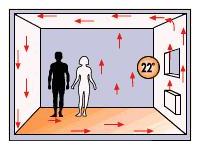 There are three types of radiant floor heating systems: Air-heated radiant floors (air is the heat-carrying medium), electric radiant floors, and hot water (hydronic) radiant floors. All three types can be further subdivided by the type of installation: those that make use of the large thermal mass of a concrete slab floor or lightweight concrete over a wooden sub floor (these are called "wet installations", and those in which the installer "sandwiches" the radiant floor tubing between two layers of plywood or attaches the tubing under the finished floor or sub floor (referred to as "dry installations")
There are three types of radiant floor heating systems: Air-heated radiant floors (air is the heat-carrying medium), electric radiant floors, and hot water (hydronic) radiant floors. All three types can be further subdivided by the type of installation: those that make use of the large thermal mass of a concrete slab floor or lightweight concrete over a wooden sub floor (these are called "wet installations", and those in which the installer "sandwiches" the radiant floor tubing between two layers of plywood or attaches the tubing under the finished floor or sub floor (referred to as "dry installations")
Floor Heating Systems
Air Heated Radiant Floors

Electric Radiant Floors
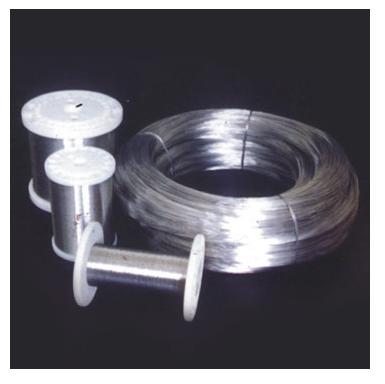 Electric radiant floors typically consist of electric cables built into the floor. Systems that feature mats of electrically conductive plastic are also available, and are mounted onto the sub floor below a floor covering, such as tile.
Electric radiant floors typically consist of electric cables built into the floor. Systems that feature mats of electrically conductive plastic are also available, and are mounted onto the sub floor below a floor covering, such as tile.
Because of the relatively high cost of electricity, electric radiant floors are usually only cost effective if they include a significant thermal mass, such as a thick concrete floor, and your electric utility company offers time-of-use rates. Time-of-use rates allow you to 'charge' the concrete floor with heat during off-peak hours (approximately 9 p.m. to 6 a.m.). If the floor's thermal mass is large enough, the heat stored in it will keep the house comfortable for eight to ten hours, without any further electrical input (particularly when daytime temperatures are significantly warmer than nighttime temperatures). This saves a considerable number of energy dollars compared to heating at peak electric rates during the day. Electrical systems tend to be the easiest to install, as they require far less additional parts to operate, and the material itself is rather small in comparison.
Electric radiant floors may also make sense for additions onto homes for which it would be impractical to extend the heating system into the addition.
Hydronic Radiant Floors
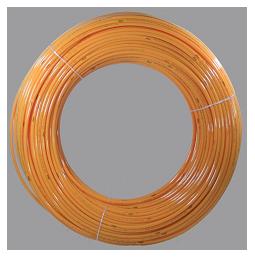 Hydronic radiant floor systems pump heated water from a boiler through tubing laid in a pattern underneath the floor. In some systems, the temperature in each room is controlled by regulating the flow of hot water through each tubing loop. This is done by a system of zoning valves or pumps and thermostats. The cost of installing a hydronic radiant floor varies by location, and also on the size of the home, type of installation, the floor covering, remoteness of the site, and the cost of labor. The costs of running these types of systems depend on a few factors, including their amount of usage and energy source being used for heating.
Hydronic radiant floor systems pump heated water from a boiler through tubing laid in a pattern underneath the floor. In some systems, the temperature in each room is controlled by regulating the flow of hot water through each tubing loop. This is done by a system of zoning valves or pumps and thermostats. The cost of installing a hydronic radiant floor varies by location, and also on the size of the home, type of installation, the floor covering, remoteness of the site, and the cost of labor. The costs of running these types of systems depend on a few factors, including their amount of usage and energy source being used for heating.
Radiant Floor Heating Installations
Whether cables or tubing, the methods of installing electric and hydronic radiant systems in floors are about the same, and fall into the two following categories:
'Wet' Installations
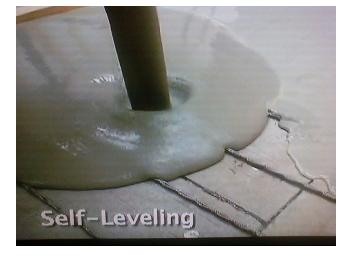 'Wet' installations embed the cables or tubing within a solid floor and are the oldest form of modern radiant floor systems. The tubing or cable can be embedded in a thick concrete foundation slab (commonly used in 'slab' ranch houses that do not have basements) or in a thin layer of concrete, gypsum, or other material installed on top of a sub floor. If concrete is used and the new floor is not on solid earth, additional floor support may be necessary, due to the added weight. You should consult a professional engineer to determine the floor's carrying capacity.
'Wet' installations embed the cables or tubing within a solid floor and are the oldest form of modern radiant floor systems. The tubing or cable can be embedded in a thick concrete foundation slab (commonly used in 'slab' ranch houses that do not have basements) or in a thin layer of concrete, gypsum, or other material installed on top of a sub floor. If concrete is used and the new floor is not on solid earth, additional floor support may be necessary, due to the added weight. You should consult a professional engineer to determine the floor's carrying capacity.
Thick concrete slab systems have high heat capacity and are ideal for storing heat from solar energy systems, which have fluctuating heat output. The downside of the thick slabs is their slow thermal response time, which makes strategies such as night or daytime setbacks difficult, if not impossible. Most experts recommend maintaining a constant temperature in homes with these heating systems.
'Dry' Installations
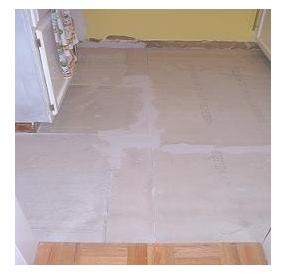 Due to recent innovations in floor technology, 'dry' floors, in which the cables or tubing run in an air space beneath the floor, have been gaining popularity, mainly because a dry floor is faster and less expensive to build. One should note that, since dry floors involve heating an air space, the radiant heating system needs to operate at a higher temperature.
Due to recent innovations in floor technology, 'dry' floors, in which the cables or tubing run in an air space beneath the floor, have been gaining popularity, mainly because a dry floor is faster and less expensive to build. One should note that, since dry floors involve heating an air space, the radiant heating system needs to operate at a higher temperature.
Some dry installations involve suspending the tubing or cables underneath the sub floor between the joists. This method usually requires drilling through the floor joists in order to install the tubing. Reflective insulation must also be installed under the tubes to direct the heat upwards. Tubing or cables may also be installed form above the floor, between two layers of sub floor. In these instances, it is recommended that hydronic systems be fitted into aluminum diffusers that spread the water's heat across the floor in order to heat the floor more evenly. The tubing and heat diffusers are secured between the furring strips (sleepers), which carry the weight of the new sub floor and finished floor surface.
Floor CoveringsCeramic tile is the most common and effective floor covering for radiant floor heating, as it conducts heat well from the floor and adds thermal storage, due to its high heat capacity. Common floor coverings like vinyl and linoleum sheet goods, carpeting, or wood, can also be used, but any covering that helps to insulate the floor from the room will decrease the efficiency of the system.
If you want carpeting, use a thin carpet with dense padding and install as little carpeting as possible. If some rooms, but not all, will have a floor covering, then those rooms should have a separate tubing loop to make the system heat these spaces \more efficiently. This is because the heat coming from under the covered floor will need to be stronger to compensate for the floor covering. Wood flooring should be laminated wood flooring, instead of solid wood. This reduces the possibility of the wood shrinking and cracking from the drying effects of the heat.